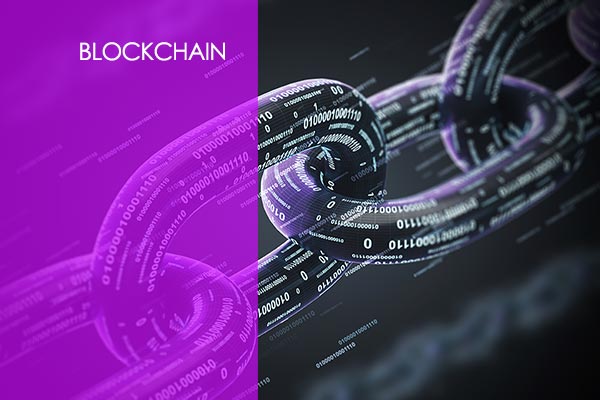In today’s rapidly-evolving world of decentralized applications, understanding the right tools and platforms is crucial for any developer. At the forefront of this evolution is Hyperledger Fabric, a modular blockchain platform tailored for enterprise solutions. This “hyperledger fabric tutorial” aims to offer a comprehensive overview for beginners, guiding you through its nuances and functionalities. By the end, you’ll be well-versed in its foundational principles, ready to embark on your own blockchain journey.
1. What is Hyperledger Fabric?
Hyperledger Fabric is not just another name in the blockchain ecosystem; it’s a groundbreaking platform bearing the credibility and backing of the Linux Foundation. As a part of the broader Hyperledger project, Fabric has been sculpted with careful consideration to meet the unique needs of enterprise-level applications and solutions.
Origins and Affiliation:
The Linux Foundation, known for its unwavering commitment to open-source projects and collaborative technology, is the force behind the Hyperledger project. By fostering a nurturing environment for several blockchain and distributed ledger technologies, the foundation seeks to push the boundaries of what these systems can achieve. Hyperledger Fabric, being a flagship project under this initiative, benefits immensely from this affiliation, both in terms of developmental support and widespread industry recognition.
“In the vast world of blockchain, Hyperledger Fabric stands out for its adaptability and suitability for business applications,” says Elena Rodriguez, a blockchain industry expert.
Designed for the Enterprise:
Hyperledger Fabric isn’t a one-size-fits-all blockchain system. It has been meticulously designed to cater to the multifaceted requirements of businesses. Whether it’s the need for stringent privacy controls, specific transaction flow sequences, or unique consensus mechanisms, Fabric’s architecture accommodates it all. This specificity ensures that enterprises don’t need to retrofit their processes to a generic blockchain solution, but rather, they can mold Fabric to their unique organizational requirements.
Modularity – The Heart of Hyperledger Fabric:
What truly sets Hyperledger Fabric apart from its peers is its robust modular design. In many conventional blockchain platforms, the design is rigid. That is, components such as consensus mechanisms, identity services, and transaction processing are often inextricably linked, offering little room for customization. This can pose significant limitations, especially for businesses with non-standard requirements.
Hyperledger Fabric, on the other hand, stands out with its plug-and-play approach. Components are interoperable, and organizations have the freedom to select, redesign, or swap out parts of the system as they see fit. Such a design promotes innovation, as developers are no longer confined to a restrictive environment. They can experiment, optimize, and continually refine their blockchain applications, ensuring they’re always aligned with their business objectives.
A Future-Ready Approach:
The realm of blockchain is still in its nascent stages, with innovations and new applications emerging rapidly. Platforms that are too rigid risk obsolescence. In contrast, Hyperledger Fabric’s inherent flexibility ensures its longevity. As the needs of enterprises evolve, so too can their implementation of Fabric, making it a forward-thinking choice for businesses keen on long-term blockchain adoption.
As Melinda Yu, a blockchain strategist, aptly states, “In a world where change is the only constant, Hyperledger Fabric’s adaptability ensures it remains not just relevant, but pioneering.“

Certified Blockchain Developer – Hyperledger (CBDH)
Seize the future with our Certified Blockchain Developer – Hyperledger (CBDH) course! Ideal for engineers and developers, this course is your ticket to Blockchain Training Alliance Certification. Master blockchain now and lead the tech revolution!
2. Key Features of Hyperledger Fabric
The innovation and allure of Hyperledger Fabric lie in its distinctive features, which have been designed with the modern enterprise in mind. As businesses grapple with the challenges of the digital age, including data security, customization needs, and interoperability, Fabric emerges as a comprehensive solution. Let’s delve deeper into these features:
2.1 Modular Design
Flexibility at its Best:
The modular architecture is perhaps one of the most distinguishing features of Hyperledger Fabric. Unlike monolithic systems that come with predefined structures and limited flexibility, Fabric’s design is akin to a set of building blocks.
Businesses can select which components they need, plug them in, and even switch them out as requirements change. This is especially valuable for sectors with fluctuating regulations or rapidly advancing tech landscapes.
Tailored Solutions for Every Need:
Whether it’s financial transactions requiring a specific consensus method, or a healthcare system needing particular membership services, the modularity ensures that every industry can tailor the blockchain to their precise needs. As Sofia Nguyen, a blockchain developer, mentions, “With Fabric’s modular design, the constraints we once faced in the blockchain realm are things of the past.“
2.2 Privacy & Confidentiality
A Shared Ledger with Boundaries:
In the age of data breaches and privacy concerns, the ability to share information without compromising on confidentiality is paramount. Hyperledger Fabric achieves this balance by allowing multiple organizations to work on a common ledger, but with a unique twist: they can ensure specific data remains private and is only visible to the entities involved.
Channels for Focused Communication:
One of the ways Fabric achieves this is through ‘channels’ – private subnets of communication between specific network members, ensuring data is shared only among those who need to see it, and kept hidden from others.
Dr. Rajan Mehta’s endorsement underscores this, “Hyperledger Fabric’s commitment to confidentiality is unmatched. For businesses, it’s a game-changer.“
2.3 Chaincode Functionality
Beyond Traditional Smart Contracts:
Chaincode in Hyperledger Fabric elevates the concept of smart contracts. While the latter sets predefined conditions for transactions, chaincode offers a more dynamic approach, enabling businesses to define intricate policies and terms for transactions.
Language Versatility:
Initially penned in Go, the evolution of chaincode now extends to Node.js, widening the scope for developers. This means businesses aren’t restricted by language limitations, and they can leverage broader developer talent and resources.
Assured Compliance:
The beauty of chaincode is that it operates only after ensuring all terms of a transaction are met. This automated compliance check not only streamlines operations but also reduces risks related to human error or misinterpretations.
In conclusion, these core features of Hyperledger Fabric position it as a versatile and robust blockchain platform, capable of addressing both current and future enterprise needs.

Certified Blockchain Developer – Hyperledger (CBDH)
Seize the future with our Certified Blockchain Developer – Hyperledger (CBDH) course! Ideal for engineers and developers, this course is your ticket to Blockchain Training Alliance Certification. Master blockchain now and lead the tech revolution!
3. Setting Up Your Environment for Hyperledger Fabric
Embarking on the journey to understand and work with Hyperledger Fabric requires a conducive environment. This section of our “hyperledger fabric tutorial” will guide you step-by-step in setting up a functional workspace, ensuring a smooth and seamless experience as you navigate the complexities of blockchain technology.
3.1 Prerequisites
Before the actual installation process, it’s vital to ensure you have the necessary tools and software. Here’s what you’ll need:
- Docker and Docker Compose: These tools will provide containerization, ensuring consistency across all development, testing, and production environments.
- Why Docker? Hyperledger Fabric operates within containers, and Docker aids in orchestrating these containers efficiently.
- Node.js: This runtime will play a pivotal role if you’re developing chaincode.
- Importance: Node.js provides an environment to run the Javascript-based chaincodes, making development more streamlined.
- Go Language (often referred to as “Golang”): This is essential for those looking to tap into the advanced features of chaincode.
- Advantages: Go offers efficiency and performance benefits, especially pertinent for complex blockchain functionalities.
3.2 Installation Steps
With prerequisites in place, it’s time to install Hyperledger Fabric. Here’s a detailed guide:
1. Download Platform-specific Binary:
- Visit the official Hyperledger Fabric downloads page.
- Identify your operating system (e.g., Windows, macOS, Linux) and download the corresponding binary package.
2. Installation Using the OS-specific Package Manager:
For Windows Users: Utilize PowerShell or the Windows Package Manager
Install-Package -Name HyperledgerFabric
For macOS Users: You can use Homebrew:
brew install hyperledger-fabric
For Linux Users: Depending on your distribution, you might use ‘apt‘, ‘yum‘, or other package managers
sudo apt-get install hyperledger-fabric
Verify the Installation:
Once the installation is complete, ensure everything is set up correctly:
hyperledger-fabric –version
This command should return the version number, confirming a successful installation.
4. Additional Steps: Post installation, it might be beneficial to familiarize yourself with the documentation or join community forums. Hyperledger has an active community that can aid in addressing any queries or issues you might face.
Wrapping up Setting Up Your Environment for Hyperledger Fabric
Setting up your environment is the foundational step in your Hyperledger Fabric journey. While the process might seem technical, following the steps diligently ensures you have a robust platform, ready to tackle the nuances of blockchain development. As you progress in this tutorial, having a well-prepared environment will significantly enhance your learning experience.
“Setting up Hyperledger Fabric might seem daunting initially, but the effort is worth the capabilities it unlocks,” notes Liam O’Connell, a senior blockchain developer.

Certified Blockchain Developer – Hyperledger (CBDH)
Seize the future with our Certified Blockchain Developer – Hyperledger (CBDH) course! Ideal for engineers and developers, this course is your ticket to Blockchain Training Alliance Certification. Master blockchain now and lead the tech revolution!
4. Your First Project with Hyperledger Fabric
Dipping your toes into the vast ocean of Hyperledger Fabric might feel overwhelming, but beginning with a basic project can set the tone for a deeper exploration. Breaking down this process into structured steps can help streamline your initiation and ensure a more productive learning curve.
4.1 Create a Network
Establishing a network forms the bedrock of your Hyperledger Fabric journey. Here’s how you can go about it:
1. Identify Participants:
- List down all entities that will interact with the blockchain. This could include organizations, users, and third-party entities.
- Example: In a supply chain network, participants might include manufacturers, suppliers, logistic providers, and retailers.
2. Define Roles and Permissions:
- Assign specific roles to each participant. Roles define what actions a participant can perform on the network.
- Set access controls. For instance, while manufacturers might have permission to add product details, logistic providers might only have permission to update shipment status.
3. Network Configuration:
- Use a configuration transaction to lay down the parameters of the network.
- This will also involve setting up nodes, which can be endorsers, orderers, or commiters, based on the chosen network structure.
4.2 Define Your Chaincode
Chaincode is the heart of your application logic on Hyperledger Fabric. When defining it:
1. Determine Business Processes:
- Understand the primary operations of your project. What transactions will occur? How will assets move or change?
2. Draft the Logic:
- Write the chaincode ensuring it encapsulates all necessary rules, validations, and policies. Remember, once deployed, altering chaincode isn’t straightforward. So, thoroughness is key.
3. Choose a Language:
- Depending on your comfort and requirement, opt for Node.js or Go for your chaincode development.
4. Validate and Review:
- Ensure your chaincode is error-free and aligns with the business needs. Consider peer reviews for better accuracy.
4.3 Deploy and Test
Once your chaincode is ready, it’s time to see it in action.
1. Deployment:
- Install the chaincode on your network’s peers.
- Instantiate the chaincode, essentially activating it on the network. This step often involves initializing certain variables or assets.
2. Transaction Testing:
- Run a series of transactions to check the chaincode’s response.
- This can involve creating assets, updating them, transferring ownership, or any other defined transaction.
3. Monitor Network Response:
- Observe how the network processes these transactions. Are the endorsers endorsing? Is the ordering service sequencing transactions correctly?
- Ensure the ledger state updates as expected after each transaction.
4. Fine-tuning and Iteration:
- Based on your observations, you might need to refine certain aspects of your network or chaincode.
- Regular testing ensures you catch inconsistencies early on and can address them efficiently.
In Summation
Kicking off your Hyperledger Fabric endeavors with a well-defined project not only helps in understanding the core concepts but also paves the way for undertaking more complex projects in the future. As with any technological undertaking, continuous learning, testing, and iteration are key to mastery.
5. Best Practices and Tips
In the realm of technology, a firm grasp of foundational concepts is just the beginning. The real difference-maker often lies in the nuances—those best practices honed over time and experience. Adhering to these standards in Hyperledger Fabric can drastically enhance the efficacy and security of your blockchain implementations.
5.1 Keep Chaincode Simple
The Essence of Minimalism: Chaincode, being the core of transaction logic in Hyperledger Fabric, should be kept succinct. Unnecessarily complex chaincode can lead to inefficiencies, harder debugging, and increased transaction times.
Benefits of Simplicity:
- Efficient Transactions: A streamlined chaincode ensures transactions are processed faster, leading to a more responsive network.
- Easier Maintenance: Simple code is easier to understand, debug, and update.
- Reduced Error Margin: The chances of bugs or unforeseen issues diminish with less complicated logic.
Expert Insight: Anika Bhatia, a seasoned blockchain consultant, aptly captures the sentiment, stating, “The simpler the chaincode, the smoother the transaction flow.” This serves as a reminder that in blockchain, as in many areas of tech, less can often be more.
5.2 Prioritize Security
A Fortress of Confidentiality: Blockchain, at its core, champions transparency. However, in a business environment, certain data needs to remain confidential. Hyperledger Fabric allows for this nuanced approach.
Steps to Enhance Security:
- Private Data Collections: Utilize Hyperledger’s private data collections feature. This ensures that data is only available to specific network members, maintaining confidentiality.
- Regular Audits: Periodically review your network’s security configurations, ensuring there are no weak points or oversights.
- Role-based Access Control: Define and implement access permissions based on user roles to prevent unauthorized data access or manipulations.
5.3 Continuous Learning
Stay Ahead of the Curve: The blockchain landscape, though relatively young, is dynamic and rapidly evolving. Staying updated is not just advisable—it’s imperative.
Adopting a Learning Mindset:
- Follow Official Releases: Keep an eye on the official Hyperledger Fabric site for updates, patches, or new features.
- Engage with the Community: Join forums, attend webinars, or participate in workshops. The Hyperledger community is vibrant and can be a rich source of insights.
- Experiment: Don’t just read about updates—test them. Create sandbox environments to understand the practical implications of new features or changes.
In Conclusion:
Treading the path of best practices ensures that your Hyperledger Fabric implementations are not just functional, but also efficient, secure, and future-ready. As you delve deeper into blockchain projects, these foundational principles will serve as guiding lights, steering you clear of common pitfalls and towards success.

Certified Blockchain Developer – Hyperledger (CBDH)
Seize the future with our Certified Blockchain Developer – Hyperledger (CBDH) course! Ideal for engineers and developers, this course is your ticket to Blockchain Training Alliance Certification. Master blockchain now and lead the tech revolution!
Conclusion
In today’s ever-evolving technological landscape, the blockchain is emerging as a transformative force, and at the heart of this revolution lies Hyperledger Fabric. For a developer, standing at the cusp of this blockchain frontier, the journey is both exhilarating and challenging. This “hyperledger fabric tutorial” is crafted to be your initial guide, a beacon, illuminating the vast expanse of opportunities that lie ahead.
An Unparalleled Asset in the Developer’s Arsenal:
Hyperledger Fabric isn’t just another tool—it’s a dynamic ecosystem. With its modular architecture, advanced confidentiality features, and an active community, it stands apart from other blockchain frameworks. It offers:
- Flexibility: Unlike many other platforms, it doesn’t confine you. Instead, it gives you the leeway to craft tailored solutions, whether it’s for supply chain management, financial transactions, or healthcare systems.
- Security & Confidentiality: In a world where data breaches make headlines all too often, the inherent security mechanisms in Hyperledger Fabric ensure data sanctity and trust.
- Community Support: As you navigate the intricacies of Hyperledger Fabric, know that you’re not alone. A thriving global community stands beside you, ready to assist, share, and innovate.
Beyond the Tutorial – An Odyssey of Exploration:
While this tutorial sets the foundational pillars, it’s the beginning of a grand adventure. The true essence of Hyperledger Fabric unfolds as you dive deeper, experimenting, failing, learning, and innovating.
- Continuous Evolution: The field of blockchain is dynamic. Staying updated, constantly refining your skills, and keeping a pulse on community innovations can propel you to mastery.
- Collaborative Innovation: Engage with peers, contribute to the open-source community, and collaborate on projects. Collective brainstorming can lead to solutions that one might not have envisioned alone.
- Real-world Applications: As you gain confidence, consider deploying solutions to real-world challenges. The true test of your expertise lies in practical applications, where Hyperledger Fabric can make tangible differences.
Carlos Mendoza’s Inspiring Perspective:
The words of Carlos Mendoza, a luminary in the blockchain realm, resonate deeply, especially for those embarking on this journey: “Let Hyperledger Fabric be your canvas, and blockchain, your art.” It’s an invitation and a challenge. An invitation to create, to innovate, and to shape the future. A challenge to push boundaries, question the status quo, and redefine paradigms.
So, as you close this tutorial and take your next steps, embrace the world of Hyperledger Fabric with curiosity, passion, and persistence. The canvas is vast, the colors myriad. It’s time to create your masterpiece.
Hyperledger Fabric Tutorial FAQ : Your Guide to Getting Started
What is Hyperledger Fabric and how does it work?
Hyperledger Fabric is a permissioned blockchain framework that provides a foundation for developing applications or solutions with a modular architecture. It differs from public blockchains by allowing members to create private networks, where transactions can only be seen by those who are explicitly granted access. This framework is designed for enterprise use, offering features like smart contracts (chaincode), privacy through channels, and consensus mechanisms that are pluggable and configurable according to the needs of the business network.
How do I install Hyperledger Fabric on my system?
To install Hyperledger Fabric, you will need to follow a few steps that involve installing prerequisites like Git, Curl, Docker, and Docker Compose, and then downloading the Fabric samples, docker images, and binaries. The exact process can vary depending on your operating system, but generally, you use the command line to pull the necessary files from the Hyperledger Fabric repositories on GitHub. It’s important to refer to the official Hyperledger Fabric documentation for the most current and detailed installation instructions tailored to your specific system setup.
Can I create a smart contract using Hyperledger Fabric?
Yes, in Hyperledger Fabric, smart contracts are known as chaincode. You can develop chaincode in several programming languages, including Go, JavaScript, and Java. The process involves defining the business logic that will govern transactions on the blockchain network. After development, the chaincode needs to be deployed to a blockchain network where it can be invoked by applications. The official Hyperledger Fabric documentation provides comprehensive guides and examples to help you get started with chaincode development.
How does consensus work in Hyperledger Fabric?
In Hyperledger Fabric, consensus is more than just agreeing on the order of transactions; it also encompasses transaction validation and commitment. Fabric offers a pluggable consensus mechanism, allowing networks to choose the consensus model that best fits their needs. The default consensus mechanism is Raft, which is a crash fault-tolerant (CFT) ordering service. However, organizations can configure their network to use other consensus mechanisms, depending on their specific requirements for performance and trust. This flexibility allows Hyperledger Fabric to support a wide range of industry use cases.
What are the main benefits of using Hyperledger Fabric for blockchain development?
Hyperledger Fabric offers several benefits for blockchain development, particularly for enterprise applications. These benefits include enhanced privacy and confidentiality through its permissioned network model and the ability to create private channels between certain network members. It also offers scalability and performance advantages due to its efficient consensus mechanism and the ability to process transactions in parallel. Additionally, its modular architecture allows for significant customization to meet specific business needs, including the choice of programming languages for smart contract development, pluggable consensus models, and various options for ledger databases.
Advance Your IT Career
with ITU Online's LIFETIME Training
Unlock the full potential of your IT career with ITU Online’s comprehensive online LIFETIME Training Library. Our expert-led courses will help you stay ahead of the curve in today’s fast-paced tech industry.

























1 thought on “Hyperledger Fabric Tutorial: A Comprehensive Beginner’s Guide”
I recently had the pleasure of exploring an outstanding IT training platform. It offers a user-friendly interface, top-notch instructors, and flexible self-paced learning. If you’re looking to enhance your IT skills, this platform is a must-try.